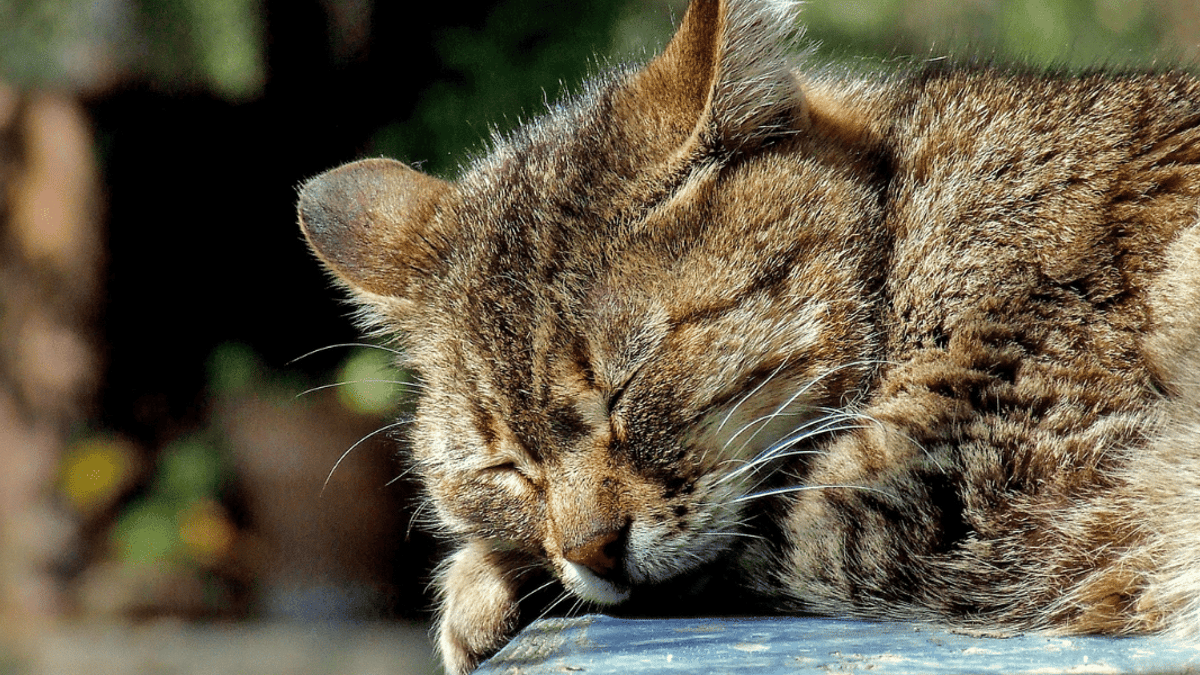To us they always seem like puppies, but even our 4-legged friends unfortunately age and with age they are more prone to developing pathologies: one of these is cat osteoarthritis.
Let’s see what to do in case of osteoarthritis in cats and how to improve the quality of his life.
Osteoarthritis in cats
Osteoarthritis is one of the most common pathological processes affecting the joints in humans and our pets.
It affects 20% of felines over 12 years of age.
In dogs, this percentage is even higher! Very often osteoarthritis in cats goes unnoticedas it progresses slowly.
In addition, our felines are well known for their skill in mask the pain, at least as long as they can contain it and / or endure it. Therefore osteoarthritis could be present even if your 4-legged friend shows any symptoms.
What is osteoarthritis in cats?
Osteoarthritis in cats is a pathology degenerative to the detriment of cartilage joint resulting in chronic inflammation and pain.
Cartilage and synovial fluid are important as they allow the bones that make up the joint to make a fluid and physiological movement, minimizing friction and allowing a correct discharge of the forces that are released from the movement.
What causes osteoarthritis?
With age, the cat’s cartilage thins and can become inflamed, causing pain. The production of synovial fluid at the same time may also decrease, leading to further rubbing.
Also, as degeneration progresses, it can affect some more severely anatomical districtsin particular:
- the hind legs,
- the spine,
- the cervical spine,
- all the structures that interest the joints.
Causes of osteoarthritis in cats
Osteoarthritis in cats very often does not have a precise trigger, but appears with age due to wear and tear of the organism and the joint system: in this case we speak of primary osteoarthritis.
When, on the other hand, there is a different predisposing cause, we speak of secondary osteoarthritis.
It may be due to:
Purebred cats are more prone to developing osteoarthritis than the common domestic cat.
The Scottish Fold is prone to developing a particular form of osteoarthritis that also appears in young cats known as osteocondrodisplasia.
Symptoms
Symptoms of osteoarthritis in cats can also appear several years later the onset of the disease.
Il first change it often concerns the behavioral sphere: Micio begins to reduce his movements, to assume antalgic positions that allow him to soothe the pain, sometimes imperceptibly.
In many cases, the extent of pain felt and the severity of the cat’s osteoarthritis are not directly related.
The symptom with which the pathology manifests itself is the lameness. There are several degrees in which the cat limps: in the lighter one the insult is almost imperceptible, but we notice a difficulty in jumping and lifting the paw during the gesture of sitting down.
How to help a cat who is sick and suffering from arthrosis?
Chronic diseases cause pain that is able to negatively affect the quality of his life, leading to a progressive abandonment of the daily routine, sometimes accompanied by nervousness and restlessness.
Therapy of a cat with osteoarthritis is therefore aimed to reduce pain and joint inflammation through drug therapy, but weight control and physical therapy are also very important.
Specific diet
Poor movement obviously predisposes to weight gain and obesity. Consequently, it is necessary to reverse the course of this vicious circle by keeping the cat’s weight as much as possible in line with its ideal weight, in order to reduce the load on the bones and the effort necessary to perform actions.
It is also essential for the cat to eat healthy food, avoiding poor quality prepackaged feed, preferring a home diet.
Pharmacological treatment
Regarding drugs, in the therapy of cat osteoarthritis the treatment can involve the use of:
- Pain relievers and anti-inflammatories for cats, including cortisone and NSAID therapy,
- Using supplements known as chondroprotectors.
Other possible remedies used against osteoarthritis in cats include:
- Physiotherapy in water,
- Acupuncture,
- Surgical treatment.
Natural remedies
A natural remedy also widely used against inflammation in humans is based on preparations containing arnica montana.
Its anti-inflammatory power makes it a perfect homeopathic remedy to be administered in drops, tablets, or intramuscularly.
Foods rich in omega-3 and green mussel extracts are further natural useful to assist in the treatment of osteoarthritis in cats.
How long does a cat with osteoarthritis live?
A cat can live many years with osteoarthritis without showing any symptoms. Everything will depend on the progression of the disease, on your general state of health and certainly on your treatment.
Remember to arrange an arrangement in the house that allows the cat to access without difficulty to its strategic points, that is bowls, litter and kennel!
For advice on which therapy is best suited to your feline, ask your trusted veterinarian for advice!

